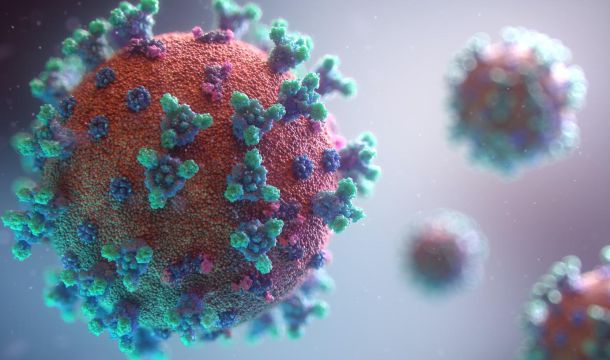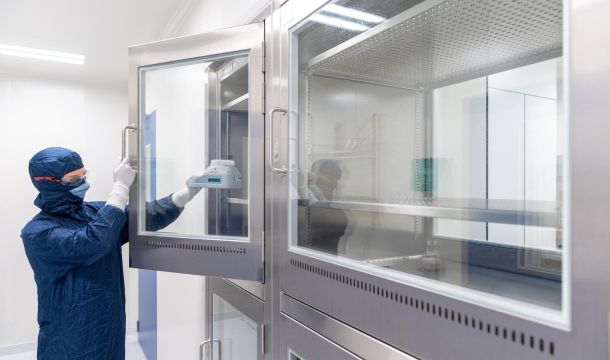OSHA Issues COVID Emergency Temporary Standard–For Healthcare. Is There More to Come?
Today, the Department of Labor released the long-awaiting OSHA Emergency Temporary Standard (ETS) for dealing with COVID-19. This ETS applies to all settings where any employee provides healthcare services or healthcare support services.
In the world of OSHA, OSHA is authorized to set emergency temporary standards when it determines that workers are in grave danger due to exposure to toxic substances or agents determined to be toxic or physically harmful or to new hazards and that an emergency standard is needed to protect them. Then, OSHA publishes the emergency temporary standard in the Federal Register, where it also serves as a proposed permanent standard. It is then subject to the usual procedure for adopting a permanent standard except that a final ruling should be made within six months. The validity of an emergency temporary standard may be challenged in an appropriate U.S. Court of Appeals. Indeed, some employer groups are considering a challenge to the COVID ETS on the ground, among other things, that COVID-19 no longer poses the type of emergency hazard that warrants an ETS.
The key requirements of the ETS are:
- COVID-19 plan: Develop and implement a COVID-19 plan (in writing if more than 10 employees) that includes a designated safety coordinator with authority to ensure compliance, a workplace-specific hazard assessment, involvement of non-managerial employees in hazard assessment and plan development/implementation, and policies and procedures to minimize the risk of transmission of COVID-19 to employees.
- Patient screening and management: Limit and monitor points of entry to settings where direct patient care is provided; screen and triage patients, clients, and other visitors and non-employees; implement patient management strategies.
- Standard and Transmission-Based Precautions: Develop and implement policies and procedures to adhere to Standard and Transmission-Based precautions based on CDC guidelines.
- Personal protective equipment (PPE): Provide and ensure each employee wears a facemask when indoors and when occupying a vehicle with other people for work purposes; provide and ensure employees use respirators and other PPE for exposure to people with suspected or confirmed COVID-19, and for aerosol-generating procedures on a person with suspected or confirmed COVID-19.
- Aerosol-generating procedures on a person with suspected or confirmed COVID-19: Limit employees present to only those essential; perform procedures in an airborne infection isolation room, if available; and clean and disinfect surfaces and equipment after the procedure is completed.
- Physical distancing: Keep people at least 6 feet apart when indoors.
- Physical barriers: Install cleanable or disposable solid barriers at each fixed work location in non-patient care areas where employees are not separated from other people by at least 6 feet.
- Cleaning and disinfection: Follow standard practices for cleaning and disinfection of surfaces and equipment in accordance with CDC guidelines in patient care areas, resident rooms, and for medical devices and equipment; in all other areas, clean high-touch surfaces and equipment at least once a day and provide alcohol-based hand rub that is at least 60% alcohol or provide readily accessible handwashing facilities.
- Ventilation: Ensure that employer-owned or controlled existing HVAC systems are used in accordance with manufacturer’s instructions and design specifications for the systems and that air filters are rated Minimum Efficiency Reporting Value (MERV) 13 or higher if the system allows it.
- Health screening and medical management: (1) Screen employees before each workday and shift; (2) Require each employee to promptly notify the employer when the employee is COVID-19 positive, suspected of having COVID-19, or experiencing certain symptoms; (3) Notify certain employees within 24 hours when a person who has been in the workplace is COVID-19 positive; (4) Follow requirements for removing employees from the workplace; (5) Employers with more than 10 employees, provide medical removal protection benefits in accordance with the standard to workers who must isolate or quarantine.
- Vaccination: Provide reasonable time and paid leave for vaccinations and vaccine side effects.
- Training: Ensure all employees receive training so they comprehend COVID-19 transmission, tasks and situations in the workplace that could result in infection, and relevant policies and procedures.
- Anti-Retaliation: Inform employees of their rights to the protections required by the standard and do not discharge or in any manner discriminate against employees for exercising their rights under the ETS or for engaging in actions required by the standard. Requirements must be implemented at no cost to employees.
- Recordkeeping: Establish a COVID-19 log (if more than 10 employees) of all employee instances of COVID-19 without regard to occupational exposure and follow requirements for making records available to employees/representatives. Report work-related COVID-19 fatalities and in-patient hospitalizations to OSHA.
Many employers have been voluntarily taking these types of precautions for a while now. Now, for healthcare employers, these precautions become required by OSHA.
Non-healthcare employers, particularly those businesses where employees work in close proximity to one another for entire work shifts, are now wondering if they will be the next target of an OSHA ETS. If vaccination rates stall and fail to reach the 70% threshold, it is possible. I’ll keep you posted.

Kathleen J. Jennings is a former principal in the Atlanta office of Wimberly, Lawson, Steckel, Schneider, & Stine, P.C. She defends employers in employment matters, such as sexual harassment, discrimination, Wage and Hour, OSHA, restrictive covenants, and other employment litigation and provides training and counseling to employers in employment matters.
Related Content
Get Email Updates
Recent Content

Trump Nominates Appointments to NLRB and EEOC but Policy Changes Likely to Be Delayed

DOL Launches Self-Audit Programs Designed to Help Employers Improve Compliance

DOL Must Release EEO-1 Reports to the Public under Open Records Laws

Current Advice on Active-Shooter Situations

New Policy for Federal Workers and Religious Expressions



